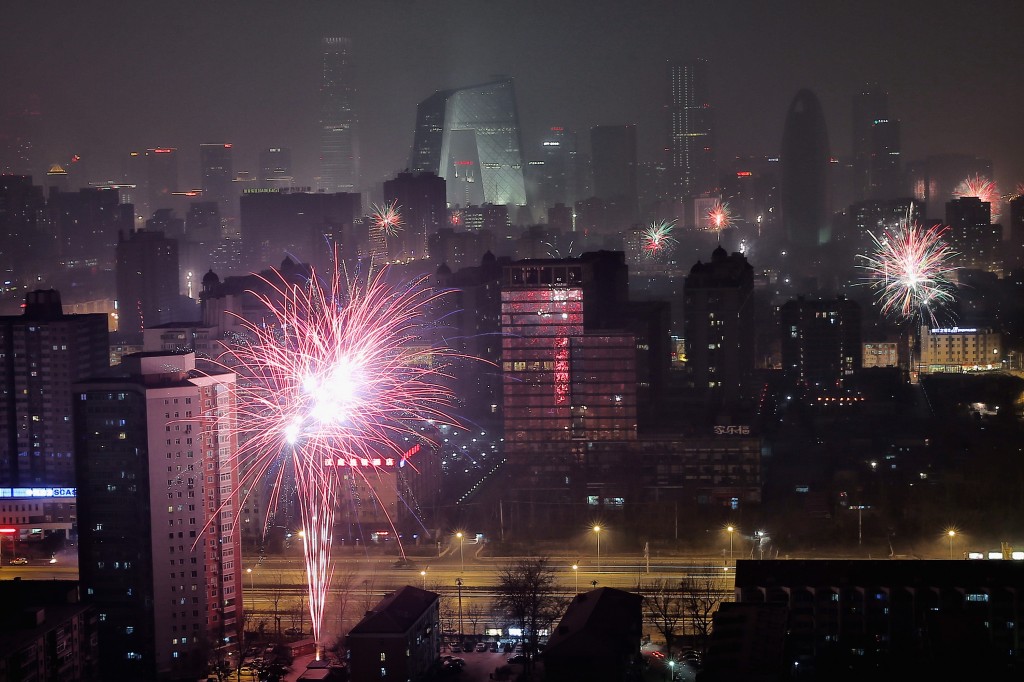As the dust settles from the weeklong for the Chinese New Year, complete with fireworks, here are some of the top environmental issues to watch in the Year of the Horse.
- Provincial leadership
Local governments combating rising rates of pollution and a dissatisfied populace are not waiting for Beijing to take action.
Provinces are limiting pollution and curbing energy usage. Guangdong – an economic powerhouse in the south – plans to decrease its reliance on coal and oil (source in Chinese). It’s remarkable because Guangdong is energy scarce; it imports most of its energy from international markets or other provinces. Lowering the percentage of energy from coal will require an expensive shift to natural gas.
Hebei province in Northern China – not far from Beijing – is best known for steel, coal and polluted skies. Home to seven of the ten worst ranking cities for air quality last December, Hebei said it will block some new projects and cut crude steel output by 15 million tons this year, according to state media. Shijiazhuang, the province’s capital, plans to cut its coal consumption by 4 million tons this year and by 15 million tons in the next four. The city isn’t stopping there; it wants a 6% reduction in PM 2.5 this year (a measure of particular matter in the air), according to state media.
Watch for more creative and aggressive provincial leadership in the coming year, especially with the more prosperous eastern and southern coasts.
- Growing tension between consumerism & the environment
When Pew Researchers posed the question “which is the issue most important for the government to address first,’ air pollution ranked fourth behind inflation, corruption and the country’s growing inequality (source and source). But the resolve to clean the environment will confront Beijing’s policies that directly impact China’s new consumerism.
In the lead up to the week-long celebration for the Chinese new year – a time when the country takes a week off work to celebrate with their families – many local governments asked its citizens to refrain from setting off fireworks to control air pollution. Traditionally fireworks are openly sold on streets in China leading up to the holiday and are an essential part of the celebration.
Increasing wealth has translated into more car owners, but in cities where massive traffic jams and poor air quality are ways of life, cities governments are putting ultimate status symbol just out of reach for many urbanites. Beijing will hand out just 150,000 new plates this year (source in Chinese), less than one percent of demand and down from 240,000 last year. Measures like these in Shanghai, Guangzhou and beyond could lead to resentment, along with a booming black market to circumvent the restriction.
These issues will play out as the government forces industry to report real-time emissions. Data collected so far this year shows major emitters are “seriously exceeding pollution discharge limits,” according to the Blue Sky Roadmap (source). It’s a move that is likely to insight protests from local residents, especially as they compare their individual impact to large industry.
How China handles the growing tension between its upwardly mobile and consumer-based middle class while cleaning up the air will be a key issue in the coming years.
- Beijing will champion non-fossil fuels, while quietly helping the coal industry
Non-fossil fuels generated just 9.8% of China’s energy in 2013, up from 9.1% a year earlier, while the National Energy Administration (NEA) aims for 10.7% this year. And Beijing wants only 65% of its total energy to come from coal, a goal that was originally slated for 2017. However, with energy demand increasing, coal consumption will still grow, something that is often overlooked. Beijing forecasts an increase of 1.6% to 3.8 billion tons consumed this year.
While championing solar, wind and more quietly hydroelectricity (Beijing counts hydroelectricity in non-fossil fuels, but the energy source remains controversial), Beijing placed improving domestic routes for coal transportation as a top priority for the country. The NDRC plans to increase domestic capacity to haul 3 billion tons a year by 2020, up from 2.26 billion at the end of 2012(source in Chinese).
Beijing may play up its environmental credentials on the international scene, and rightly so as it works to add 14 GW of solar, 18 GW of wind and 20 GW of hydro this year alone (ambitious goals that leave many skeptical), but coal will continue to play a leading role. Without serious measures to clean up coal-fired power plants, its drive towards renewables will have a minimal impact on air quality.
Watch the industry’s periphery – transportation and emission targets at power plants – instead of looking at competing fuels for any real movement to clean the air.

